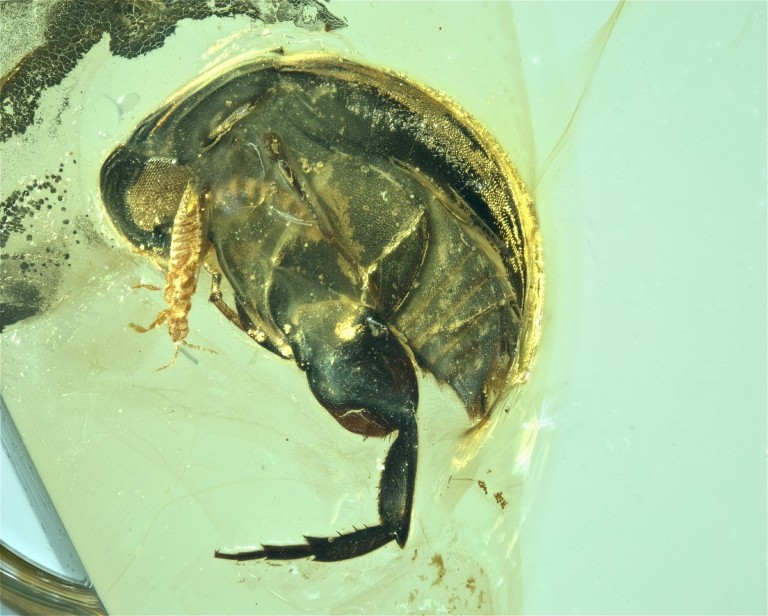Breaking news in the field of paleontology. A new fossil of a beetle was discovered in a mine in Myanmar completely preserved in amber along with pollen on its body. This may not sound surprising; however, this species of beetle existed 50 million years before the first record of flower–insect pollination occurred.
A NEW SPECIES
Scientists from China and the United States found the 99-year-old fossil deep inside a mine in Myanmar from the same amber deposit as the first ammonite fossil was found. In the journal published at the Proceedings of the National Academy of Sciences, the researchers behind the study found out that this newly discovered species of beetle existed in the period where Pterodactyls are still present (mid-Cretaceous period).
The researchers named the beetle Angimordella burmitina after the country where it was found. David Dilcher, co-author of the study and a paleobotanist and an emeritus professor at the Department of Earth and Atmospheric Science at the IU Bloomington College of Arts and Sciences and an affiliate at Indiana University, described the insect as well developed for pollination. Upon close inspection with the specimen, the shape of its body, as well as its mouthparts, is specialized to consume pollen. These specialized structures were revealed using microcomputed X-ray tomography.
On the other hand, the flower in which the pollen was extracted belonged to an ancient group of plants called the Eudicots. In a statement released by Indiana University, Dilcher explains, "It's exceedingly rare to find a specimen where both the insect and the pollen are preserved in a single fossil. Aside from the significance as earliest known direct evidence of insect pollination of flowering plants, this specimen perfectly illustrates the cooperative evolution of plants and animals during this time period, during which a true exposition of flowering plants occurred."
Dilcher also explains that the shape and structure of the pollen have evolved to be spread through contact with insects. This conclusion was brought forth after examining the morphological characteristics of 62 grains of pollen found preserved with the beetle.
It was hard, at first, for Dilcher and co-author Bo Wang of the Nanjing Institute of Geology and Paleontology to find these pollen grains. It was hidden beneath the body hairs of the insect, and the researchers have to use confocal laser microscopy for it to be revealed.
Before this finding, scientists were convinced that this relationship between plants and insects for reproduction began in the Mid-Eocene.















